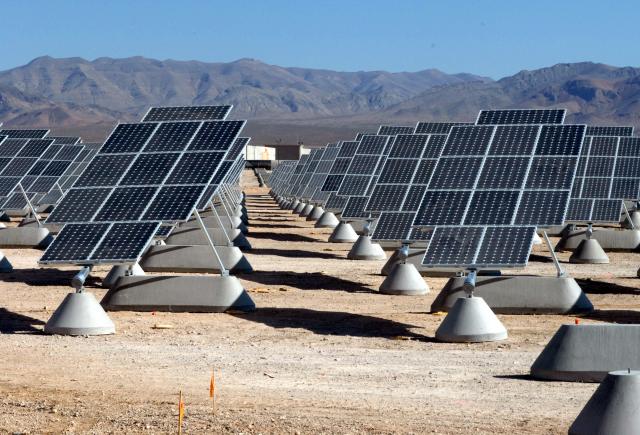China’s solar power firms are emerging as the industry’s dominant force after the collapse of foreign competitors, but the new market leaders are already struggling with low prices and overcapacity.
As the workshop of the world, China has used cheap labour and state support to build a solar industry from scratch in just over a decade as part of a broader strategy to move up the manufacturing value chain from cheap toys and clothes.
China is the world’s second biggest oil consumer, and polluting fossil fuels account for 90 percent of its total energy use, but the country is making large strides forward in clean energy.
Analysts say Chinese firms now have 70 percent of the growing global market in solar panels, thanks to aggressive pricing and the collapse of three US competitors in the last two months.
“The position of Chinese players has certainly been enhanced this year,” said Tang Xiaodong, a Shanghai-based analyst at independent investment advisory firm CEBM.
“Lower costs are the direction of the industry and the advantages of Chinese firms on this front have been manifested more clearly.”
China’s solar panel prices have fallen to around $1.2 per watt of generation, down from about $1.7 last year and much lower than the global average of about $2.0 in 2010.
But the downward price spiral has hurt revenues across the industry, and Chinese companies are themselves feeling the pain.
“Everyone is facing falling prices, increasing inventories and dire straits,” said an official at Yingli Green Energy, one of China’s biggest solar companies, speaking on condition of anonymity.
Critics argue that Chinese companies have unfair advantages in the form of access to cheap capital from China’s state-run banks.
However, they are not alone in receiving government assistance — the latest US solar firm to file for bankruptcy was Solyndra, which had a $535 million loan guarantee from President Barack Obama’s administration.
It joined Evergreen Solar, once listed on the Nasdaq exchange, and high-profile Intel spin-off SpectraWatt.
But even before the collapse of those three US companies, China was already home to the world’s largest producer of solar panels, Suntech.
“There is a periodic murmur from industry, trade groups and elements in the US government that unfair subsidies in other countries put the US at a distinct disadvantage in the solar industry,” said US-based analysis firm GTM Research in a recent report.
China’s Suntech, which is listed on the New York Stock Exchange, counters such criticism by saying consolidation of the emerging industry was natural.
“The recent high-profile bankruptcies of innovative solar enterprises are unfortunate,” Suntech said in a statement to AFP.
“However, competition among aggressive and innovative companies is critical to driving efficiency, productivity, and industry growth.”
Chinese companies are almost solely focused on exports, with as much as 95 percent of production sold overseas according to some estimates, and they have responded to falling prices for solar panels by ramping up shipments.
But analysts expect domestic demand for solar products to rise with the introduction of a new national “feed-in” tariff — a price the government guarantees to pay to producers of solar power feeding into the grid.
“The days of China’s PV (photovoltaic) production being purely for export are coming to an end,” GTM Research said, referring to solar power technology.










